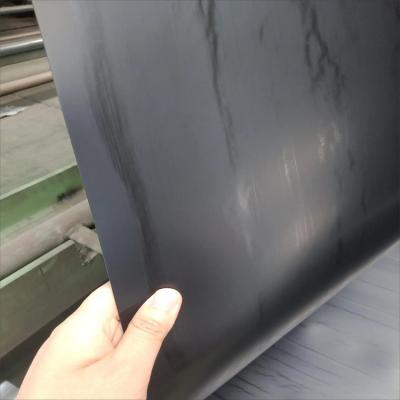Water conservancy channel is an important facility for water resources allocation and agricultural irrigation, and its anti-seepage treatment is directly related to the stability and service life of the channel. In recent years, as a new type of anti-seepage material, composite geomembrane has been widely used in anti-seepage treatment of water conservancy channels. So, is it good to use composite geomembrane for anti-seepage treatment of water conservancy channels? This paper will analyze the advantages and disadvantages of composite geomembrane and its application in anti-seepage treatment of water conservancy channels.
First, let’s look at the advantages of composite geomembranes. Composite geomembrane is composed of high molecular polymer and geotextile, which has excellent anti-seepage performance. Its anti-seepage coefficient is low, which can effectively prevent water penetration and reduce the leakage loss of the channel. In addition, the composite geomembrane also has good tensile strength and elongation at break, which can adapt to the deformation of the bottom of the channel and maintain the structural stability. At the same time, the composite geomembrane also has the characteristics of corrosion resistance, aging resistance and ultraviolet resistance, and can be used for a long time under harsh environmental conditions.
However, there are some drawbacks to composite geomembranes. First of all, the construction is difficult and requires professional construction team and construction technology. The laying of composite geomembrane needs to ensure the flatness and compactness of the membrane surface, otherwise its anti-seepage effect will be affected. In addition, the composite geomembrane also needs to be careful to avoid puncturing and scratching by sharp objects during transportation and storage, so as not to destroy its integrity.
In the anti-seepage treatment of water conservancy channels, the application of composite geomembrane has certain advantages. First of all, the composite geomembrane can effectively prevent leakage at the bottom of the channel and improve the water storage capacity and irrigation efficiency of the channel. Secondly, the construction period of composite geomembrane is short, which can shorten the construction period and reduce the project cost. In addition, the composite geomembrane has a long service life, which can reduce the number of repairs and replacements of channels and reduce maintenance costs.
However, in the anti-seepage treatment of water conservancy channels, we also need to pay attention to some limitations of composite geomembranes. For example, when laying the composite geomembrane, it is necessary to ensure that the bottom of the channel is flat and there are no sharp objects protruding to avoid puncturing the membrane surface. In addition, the composite geomembrane needs to be welded and fixed after laying to ensure its integrity and stability. These construction requirements all require adequate planning and preparation before construction.
In addition, we also need to pay attention to the performance changes of composite geomembranes during long-term use. Although composite geomembrane has the characteristics of aging resistance and ultraviolet resistance, its performance may be affected to some extent when exposed to natural environments such as sunlight, rain and soil for a long time. Therefore, in the anti-seepage treatment of water conservancy channels, we need to regularly inspect and maintain the composite geomembrane to ensure the stability and durability of its performance.
To sum up, it has certain advantages and applicability to use composite geomembrane for anti-seepage treatment of water conservancy channels. Composite geomembrane plays an important role in the anti-seepage treatment of water conservancy channels because of its excellent anti-seepage performance, good adaptability and long service life. However, we also need to recognize some limitations and precautions in the construction and use of composite geomembranes. Therefore, in practical applications, we need to select and apply according to specific conditions, and strengthen construction and maintenance management to ensure the effectiveness and safety of composite geomembranes in anti-seepage treatment of water conservancy channels.
Post time: Jan-10-2025




